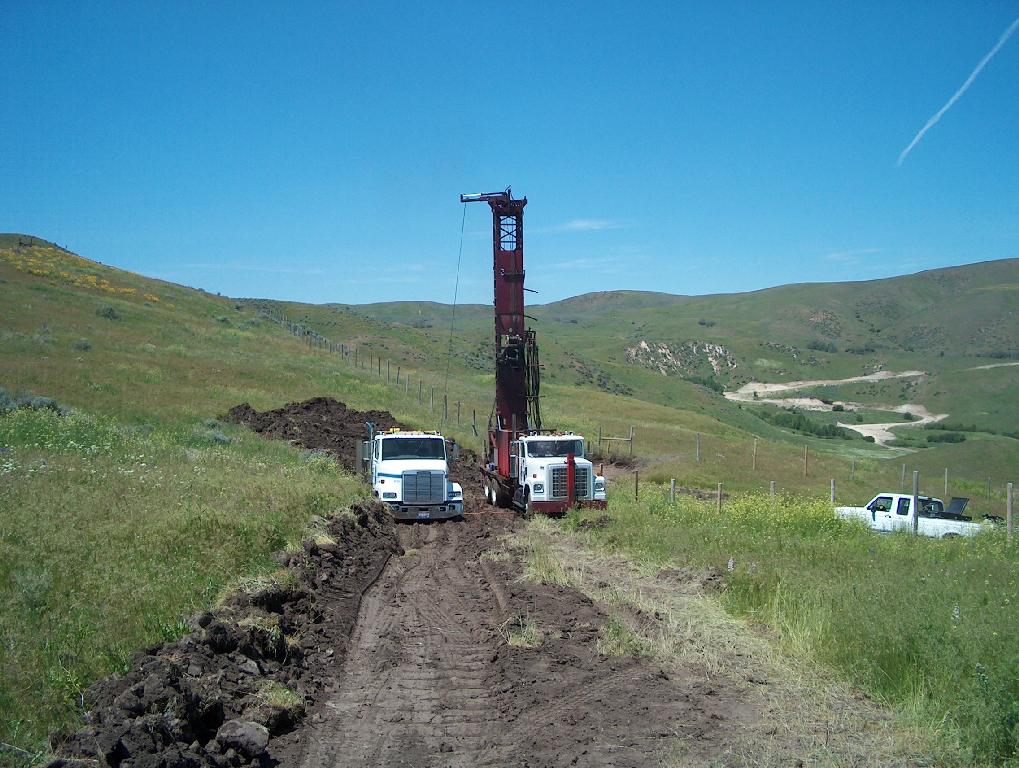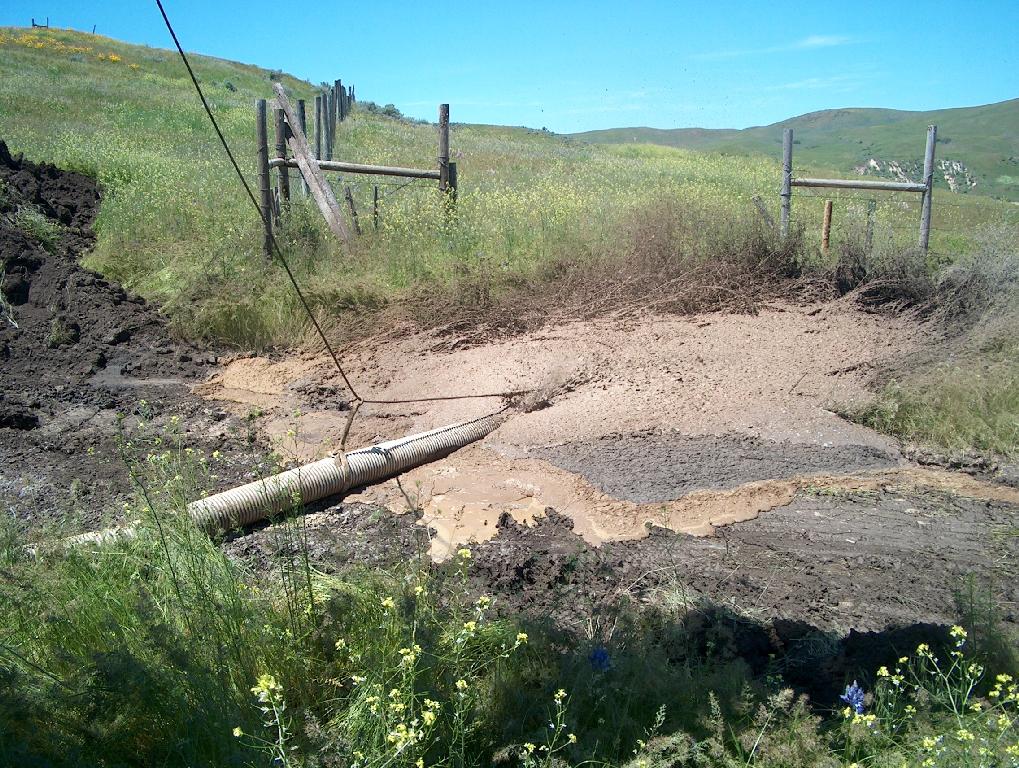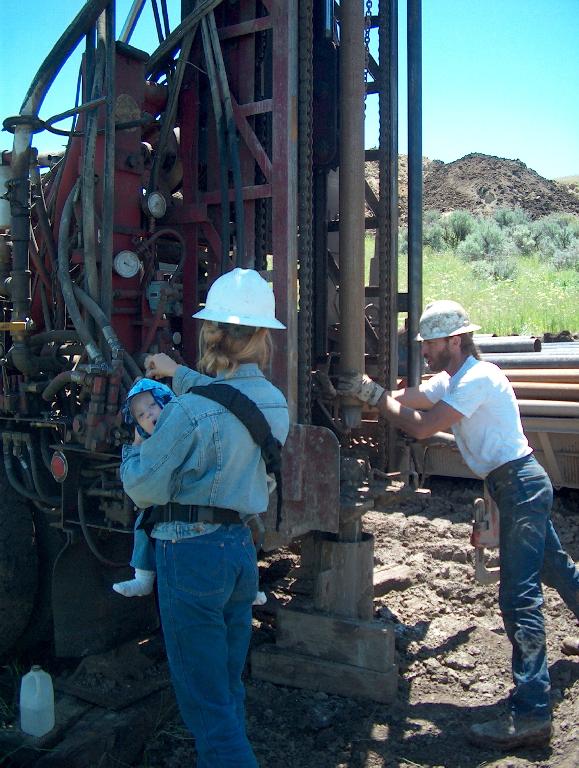Jim (don't know the last name--he goes to church with me, so it is strictly first name) the well driller started today. I went out to see how it was going, and as I walked towards the drilling rig, I wasn't sure that it was even going, until I saw diesel exhaust. The rig, once fully erected, stands out.

The second truck carries 1200 gallons of water (used to lubricate the drilling bit as it cuts through rock) and a collection of drill extensions and casing. The drill extensions screw into each other, allowing the drill bit to keep going down. The casings go into the hole to prevent the rock from collapsing in, once the drill is removed. Jim tells me some rock is strong enough that it doesn't require casing, but this sandstone does. I am not surprised--it crumbles very easily.
Air pumped to the bottom of the hole forces the mixture of drilling foam, water, and pulverized rock to the surface, where it comes out looking like bad chocolate pudding.

I asked Jim when he knew that he had reached water. Apparently instead of coming out thick, it gets very runny, because the water in the formation overwhelms the small amount of water he is putting down the hole.
When I arrived, he was at 67 feet, of which the first 33 feet were this beautiful organic-rich soil with some basalt rocks (apparently from up the hill), and the rest was sandstone (although it is just wet sand when it comes out). While I was there, he added another drilling extension, and went another six to ten feet down. I am expecting water at about 120 feet, based on the experiences of others in similar formations nearby.
Here's Jim's assistant, also a licensed well driller, with their miracle child, Pearl--born after sixteen years of trying for children, with all the medical assistance possible, and then giving up. Jim gave a powerful testimony in church a few months back to the importance of trusting God when the desires of your heart aren't being met.

My wife and I returned in the evening, having not heard from him--and we found that the bad chocolate pudding mound was a lot larger and runnier. There were now bags of bentonite (used for sealing around the bore hole at the surface to prevent surface water contamination). The winch was no longer on the drill extension side of the support truck, but on the casing side--and it seemed as though a number of the casings were now missing. I think this means that he hit water within an hour or two of my leaving. I haven't heard from Jim, but I expect to know tomorrow.
We climbed the hill to look at the neighboring property--and met our neighbors with the airstrip at the top of the hill. They confirmed that there are predators (other than mosquitoes) in the area. They were chased across a barbed wire fence "over there" by a black bear, and they have seen a cougar drinking at the pond about 300 feet from our property line. Foxes and badgers abound. We look forward to seeing them. We mean them no harm, but we aren't insufferably dense bunny-huggers, so...
What are considered reliable handgun cartridges for short range defensive use on black bear and cougar? The Smith & Wesson in .44 Magnum would certainly be sufficient, but it is a bit clumsy for my wife to carry when hiking. Is .45 ACP JHP sufficient for black bear, or would FMJ be required for sufficient penetration to hit vital organs for an immediate cessation of hostilities?
What about cougar? I know that these are thin skinned animals, and smaller than the two-legged predators that we usually worry about, but unlike a criminal, who is likely to be deterred from continuing an attack by fear of bleeding to death, a cougar may not. Is there a reliable stopping choice in a handgun caliber?
UPDATE: I spoke to Jim this morning. At 127 feet they hit water. He thinks it is only about five gallons per minute--adequate, but he believes that going a little deeper might get us a higher flow rate.
No comments:
Post a Comment